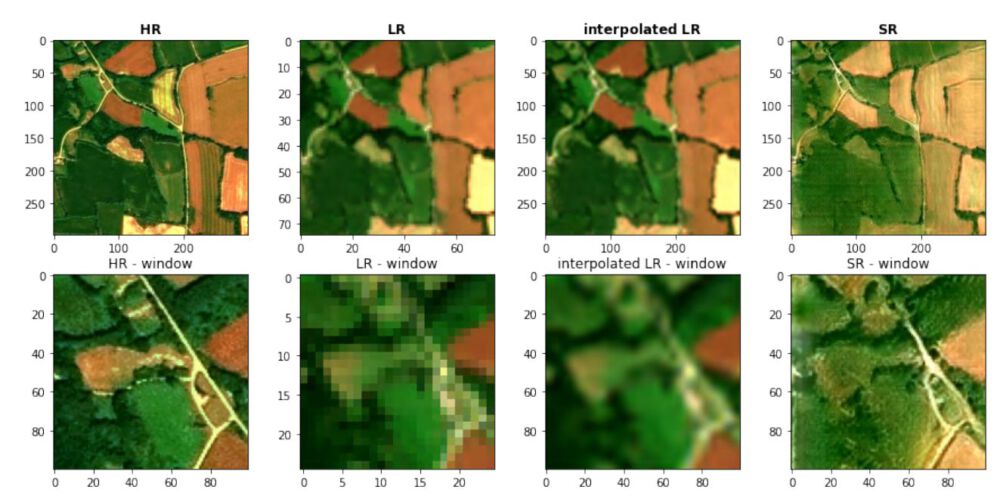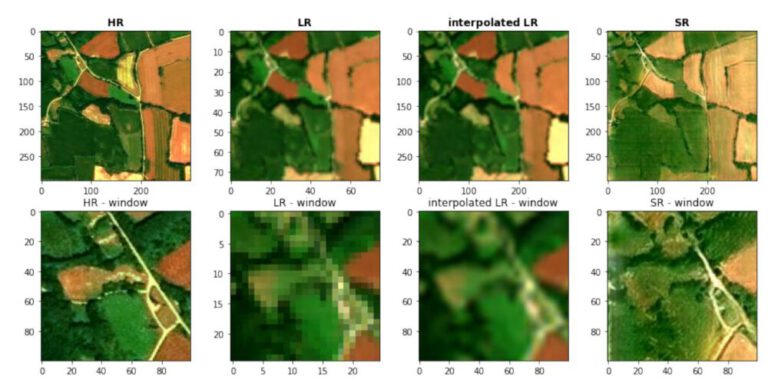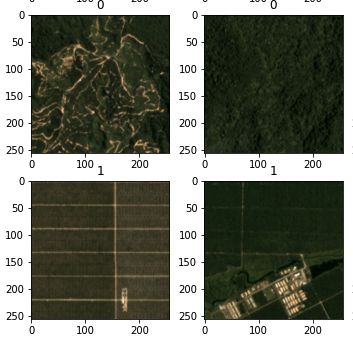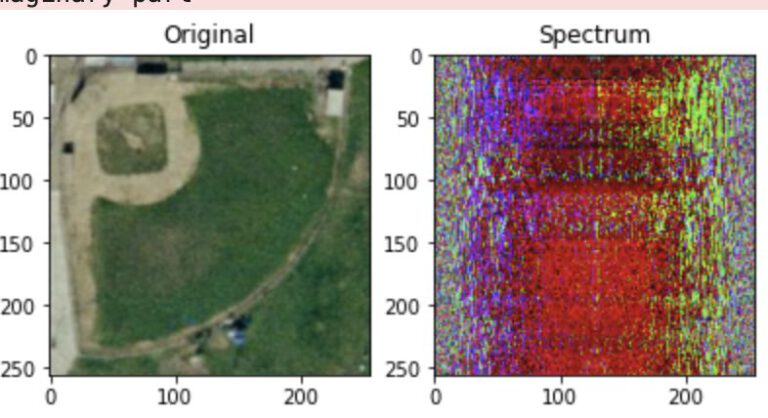The M.Sc. thesis was resarched, written and defended at the University of South Brittany in Vannes, France between Februrary and June 2022.
Abstract
Deep convolutional networks for super-resolution are an intensively researched method in the field of computer vision. Applying these technologies to the field of remote sensing can provide many benefits, mainly since a high temporal and a high spatial resolution are mutually exclusive for remote sensing products. Super-resolution has the possibility of bridging that gap by upsampling the high frequency imagery to a higher spatial resolution. Many challenges arise when trying to implement super-resolution techniques to the specific characteristics of remote sensing data, as well as ensuring that the needs of the remote sensing communities towards the resulting data are met. This thesis compares how well several different models with different architectures can adapt to the task of performing super-resolution for the region of Brittany in France, using data from the SPOT-6 satellite as high-resolution ground truth to super-resolute Sentinel-2 imagery. We also demonstrate that employing a histogram matching approach can successfully bridge the spectral gap between the sensors. The experimentation shows that the standard Super-Resolution Convolutional Neural Network (SRCNN) and Residual Channel Attention Network (RCAN) succeed in adapting the color mapping, but fail to deliver realistic-appearing super-resolution images. On the other hand, we show that the SuperResolution Generative Adversarial Network (SRGAN) can produce visually impressive plausible super-resoluted images, but that the products lose the connection to the underlying real-world phenomena that the satellite imagery depicts. The method of including time-series information by a simple band-stacking approach into the generative adversarial model is shown not to be sufficient, while the fusion of encoded information of multi-temporal low-resolution imagery via a recursive network shows promising potential. In order to build on that potential, the main challenges to overcome are identified as formulating useful loss functions as well as the publishing of a common dataset to provide a comparison baseline, which is geared towards a real-life application.
Keywords: Deep Learning, GAN, Remote Sensing, Residual Network, Sentinel-2, SPOT-6, Super-Resolution, Time Series




